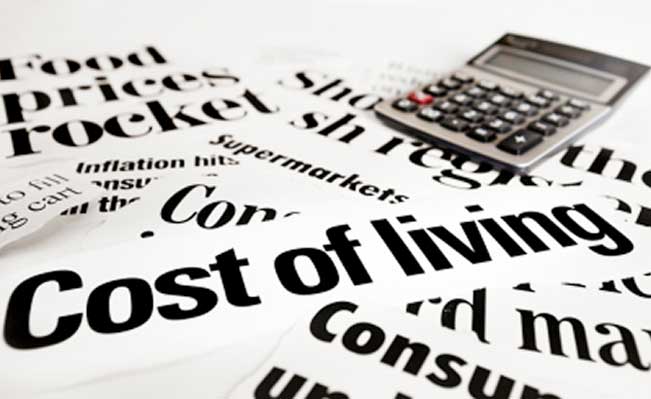
April’s rise in the CPI rate suggests that the cost of living is once again increasing faster than wage rises writes James Meadway
Figures out today show an increase in the official measure of inflation, the Consumer Price Index, from 1.6% in March to 1.8% in April, the first rise in inflation since early last year. This is above the rise in average wages, which – including bonuses – rose by 1.7%, or without bonuses, 1.3%.
Just days after Bank of England governor Mark Carney claimed the end was in sight for the cost of living crisis, real standards of living are on the slide again. Even what are, on the official measures, historically very low rates of inflation, wage increases are not keeping pace price increases.
Since 2008, average real earnings (earnings after inflation is taken account of) have fallen by 8-10%. The graph below shows how average real earnings have changed since 1979. It’s immediately clear how unusual the last few years have been; in fact, this is the longest sustained decline in real living standards for most people since the 1870s.
 The causes of this are made clear in a new paper from Danny Blanchflower and Stephen Machin at the LSE’s Centre for Economic Performance. First, UK productivity growth crashed in 2008, and (unlike other developed economies) has not seriously recovered. This matters greatly for long-term wage rises: productivity sets the boundary at which, over the long-run, employers will pay wage increases. Wage rises ahead of productivity translate directly into rising costs. Unless productivity picks up, there will be no immediate scope for meaningful improvements in real pay.
The causes of this are made clear in a new paper from Danny Blanchflower and Stephen Machin at the LSE’s Centre for Economic Performance. First, UK productivity growth crashed in 2008, and (unlike other developed economies) has not seriously recovered. This matters greatly for long-term wage rises: productivity sets the boundary at which, over the long-run, employers will pay wage increases. Wage rises ahead of productivity translate directly into rising costs. Unless productivity picks up, there will be no immediate scope for meaningful improvements in real pay.
However, they make a second point. Britain is an increasingly unequal society; on Thomas Piketty’s figures for wealth, it moved from being amongst the most equal in Western Europe in the 1970s, just behind Sweden, to the most unequal today. (Lest anyone think this social cost paid for a more dynamic economy, it did not: growth in the 1970s averaged 2.4% per year; growth in the 2000s, 1.6%). Rising inequality in earnings has meant that, over time, what most people earn is becoming “decoupled” from productivity increases. Crudely, gains in productivity (and therefore in economic growth) are going to a smaller section of the population, rather than being evenly spread.
As a result, even if productivity improves, unless it is also accompanied by a reduction in inequality it is entirely possible that median earnings will fail to follow suit. Blanchflower and Machin present the US as a dire warning of what could now be happening here, where median real earnings, incredibly, have not improved since 1979 – despite immense economic growth.
What’s needed is both a sharp improvement in productivity, which Blanchflower and Machin rightly view as unlikely and some element of redistribution and regulation. Stronger trade unions would help; higher minimum wages, in addition; and a tax system that began to effectively target the truly wealthy, as Piketty himself has recommended.
Failing this, the outlook for most of us remains glum. As the authors put it, “Even if productivity were to rise rapidly, the tendency for longer-run inequality trends to cause an unequal division of wages from productivity gains to the top (like bankers’ bonuses) would need to be addressed. Until that happens or until policy starts to address these issues seriously, it seems that the prospects of significant, rather than modest, real wage increases for typical workers are bleak.”

